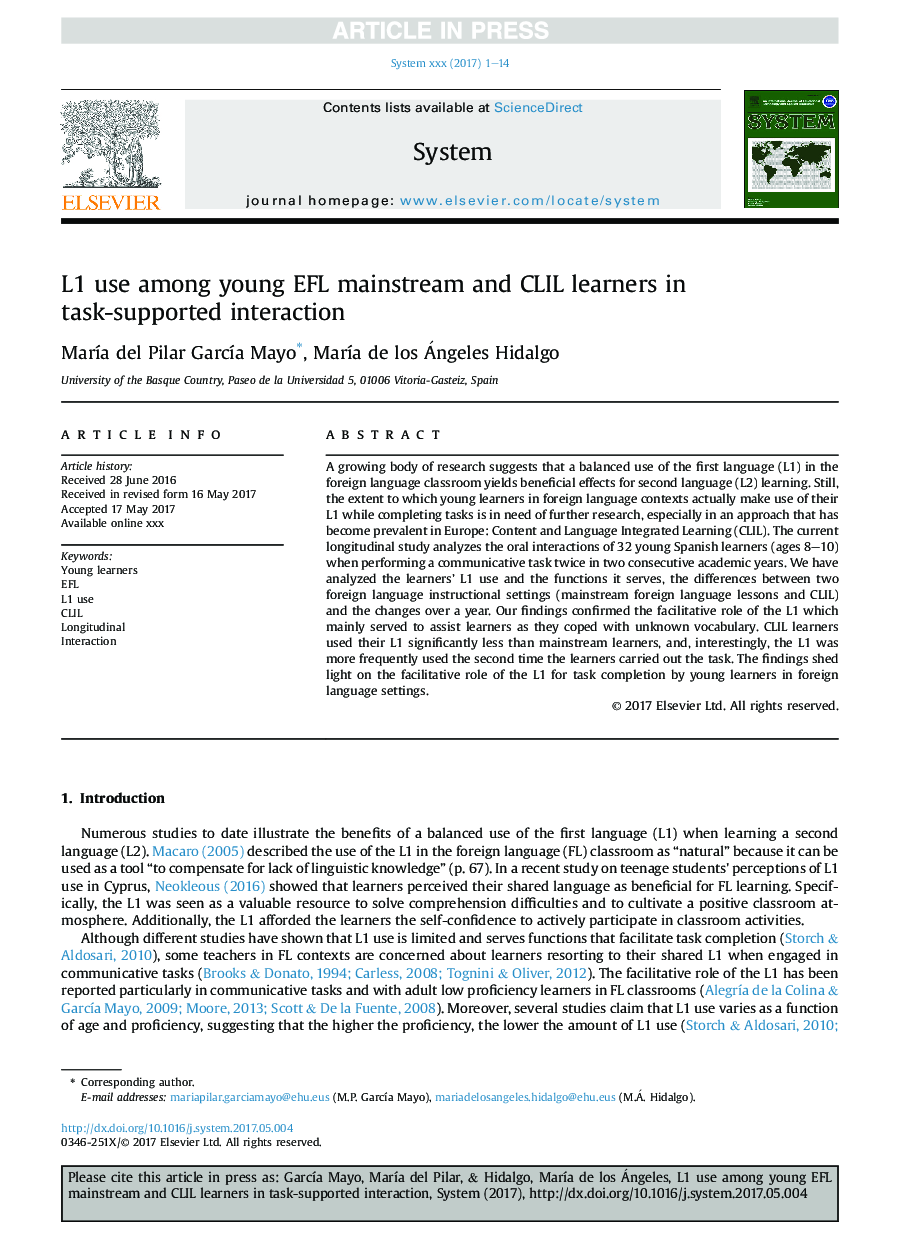| Article ID | Journal | Published Year | Pages | File Type |
|---|---|---|---|---|
| 4941397 | System | 2017 | 14 Pages |
Abstract
A growing body of research suggests that a balanced use of the first language (L1) in the foreign language classroom yields beneficial effects for second language (L2) learning. Still, the extent to which young learners in foreign language contexts actually make use of their L1 while completing tasks is in need of further research, especially in an approach that has become prevalent in Europe: Content and Language Integrated Learning (CLIL). The current longitudinal study analyzes the oral interactions of 32 young Spanish learners (ages 8-10) when performing a communicative task twice in two consecutive academic years. We have analyzed the learners' L1 use and the functions it serves, the differences between two foreign language instructional settings (mainstream foreign language lessons and CLIL) and the changes over a year. Our findings confirmed the facilitative role of the L1 which mainly served to assist learners as they coped with unknown vocabulary. CLIL learners used their L1 significantly less than mainstream learners, and, interestingly, the L1 was more frequently used the second time the learners carried out the task. The findings shed light on the facilitative role of the L1 for task completion by young learners in foreign language settings.
Related Topics
Social Sciences and Humanities
Arts and Humanities
Language and Linguistics
Authors
MarÃa del Pilar GarcÃa Mayo, MarÃa de los Ángeles Hidalgo,
